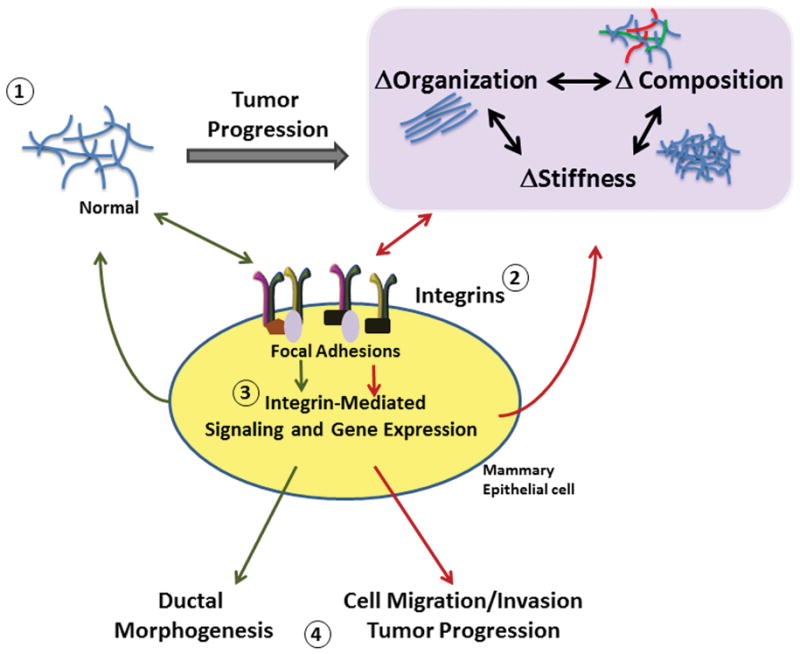Figure 1.

Bi-directional signals from integrins and the ECM during mammary tumor progression. 1. The extracelluar matrix changes in both physical and chemical composition during breast cancer progression. 2. The integrins respond to and signal back to the matrix through altered integrin engagement, increased adhesion, and focal adhesion signaling. 3. Downstream integrin signaling changes in response to cues from the ECM. Integrin signaling pathways feed back to the matrix through enhancing deposition of matrix components and by altering cell contractility to induce matrix organization. 4. Ultimately, mammary epithelial cells respond to the ECM by tuning their phenotype toward ductal morphogenesis under normal matrix conditions or toward enhanced proliferation, migration and invasion in response to abnormal matrix conditions.
